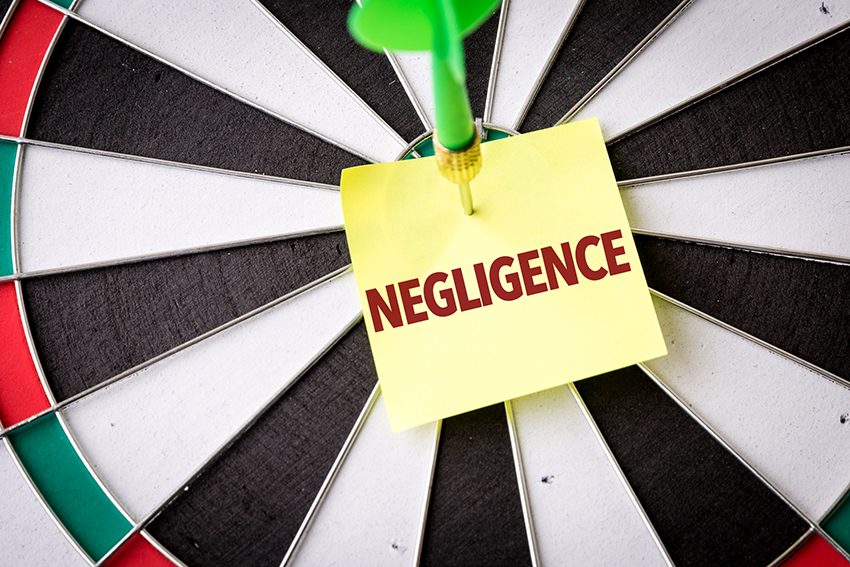One of the most common types of personal injury lawsuits involves a claim of negligence. Negligence describes a situation in which a person acts in a careless manner and results in someone else getting hurt or property being damaged.
Negligence can often be a difficult area of law to define because it involves a legal analysis of what many would consider moral obligations or ethical judgment. Therefore, the law has defined certain elements to assist in determining negligence as they relate to each case.
In order to win a negligence case, the plaintiff (the person injured) must prove the following four elements to show that the defendant (the person allegedly at fault) acted negligently:
Duty
The existence of a legal duty that the defendant owed to the plaintiff. The defendant owed a legal duty to the plaintiff under the circumstances. Negligent behavior can be determined by actions or the lack of actions.
For example, the duty to act on behalf of a victim due to another's conduct or even the duty to operate a vehicle safely and legally on the road can both be considered negligence.
Breach
The defendant's breach of that duty. The defendant breached the legal duty or obligation by acting or failing to act in a certain way. The court will then look to see whether the defendant breached this duty by acting or not acting within reason.
This term is referred to as "reasonably prudent person," a legal term that represents the standard actions of the "average person" in a certain situation. This element decides whether or not the defendant could have foreseen their actions might cause harm because then the court can determine whether that knowledge (or duty) was breached. Meaning, knowing what the defendant knew at the time, were they aware someone could be injured by their actions?
Causation
Plaintiff's sufferance of an injury. This is where the court determined if it was the defendant's actions that actually caused the plaintiff's injury. Simply put, are the defendant’s actions or lack of actions at fault or in any way responsible for the plaintiff’s harm or damages?
Damages
Proof that the defendant's breach caused the injury (typically defined through proximate cause), or the plaintiff was harmed, or damages occurred as a result of the defendant's actions. It must also first be determined whether or not there was an injury or damage before deciding the compensation, which seems obvious.
However, the grounds for what qualifies as "damage" or "harm" can be relative depending on the situation. Typically, in order to meet the injury element of a case, the injury must be one of two things: bodily harm and/or harm to property. This can be personal property or real property.
Qualifying as "bodily harm" has subjective factors, as I’m sure you can imagine. For example, according to Cornell Law, "a pure economic loss will usually not meet the injury requirement. However, sometimes emotional distress may meet the bodily harm requirement, even if there is no physical harm to accompany it."
This has likely already been determined leading up to this final element of negligence, but this is also where the cost of those damages and/or injury are calculated. This requires that the court be able to compensate the plaintiff for their expenses. A common example is compensating the plaintiff for medical bills or property repair.
If you or a loved one have been injured due to someone’s negligence, contact the experienced professionals at Bart Durham Injury Law today. If you simply have questions or need help determining a claim, we offer FREE consultations.
You deserve to be paid for what you’ve been through, and we will fight for justice!



